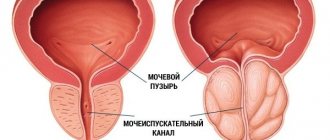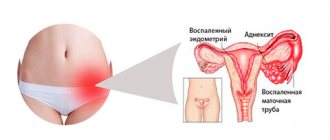Hydronephrosis is a progressive kidney disease, characterized by expansion of the cavities (calyceal part) of the kidney, which leads to dysfunction of the organ and atrophy.
Author:
- Sorokin Nikolai Ivanovich, head of the urological service of the university clinic of Moscow State University. M. V. Lomonosova
5.00 (Votes: 2)
Reasons for development
The following factors can lead to the development of pathology:
- Congenital anomalies. These include incorrect location of the ureter or its entry into the bladder, as well as the arteries of the kidneys and their branches
- Inflammatory processes in the bladder and ureter
- Urolithiasis disease
- Tumor-like formations in the pelvis
Call now
(495) 7 800 500
Leave a request
You will receive an automatic call back, wait for the operator to respond.
Policy regarding the processing of personal data Consent to the processing of personal data
Make an appointment
Classification
Depending on the severity of atrophy of the kidney parenchyma, 4 degrees of hydronephrosis are distinguished:
- 1st degree - parenchyma is preserved,
- 2 degrees - minor damage to the parenchyma,
- 3 degrees - significant damage,
- 4 degrees - absence of parenchyma, the kidney does not function.
There are three stages of development of this disease:
- Stage I – only the renal pelvis is dilated, kidney function is not changed or is mildly impaired.
- Stage II - the size of the kidney is increased by 15-20%, the pelvis expands significantly, its wall becomes thinner. The evacuation capacity of the pelvis is significantly impaired. Kidney function decreases by 20-40%.
- Stage III – the size of the kidney is increased by 1.5-2 times. The pelvis and cups are greatly expanded, the kidney is a multi-chamber cavity. There is a sharp violation of the evacuation capacity of the pelvis. Kidney function is reduced by 60-80% or absent altogether.
Depending on the cause, hydronephrosis can be congenital or acquired.
- ary acquired hydronephrosis can be caused by urolithiasis, tumors, and damage to the urinary tract.
- with congenital hydronephrostenosis, there may be a defect in the cellular structure of the nephron or stenosis of the pyeloureteral segment, which is caused by stenosis, the valve of the ureteric mucosa, compression by an accessory vessel, etc.
Both congenital and acquired hydronephrosis can be aseptic or infected.
Types of disease
Highlight:
- Unilateral hydronephrosis
- Bilateral hydronephrosis
In the first case, the pyelocaliceal complex is affected only on one side, in the second - on both sides. Unilateral damage usually occurs against the background of congenital narrowing, conflict with abnormal renal vessels, as well as urolithiasis. The cause of a bilateral process can be stones, tumors or prostate adenoma.
The doctor knows how to treat kidney hydronephrosis at one stage or another. It is only important for the patient to contact a specialist as soon as possible.
Are there ways to predict the course of hydronephrosis in a newborn?
There is currently no method to determine how hydronephrosis will develop in a newborn. Therefore, the most correct approach is to monitor the condition of the kidney over time by an experienced urologist. The main method of assessment during dynamic observation is ultrasound. The difficulty of predicting the development of hydronephrosis in a newborn is determined by unstable water metabolism, changing kidney function, as well as the possibility of ripening (maturation) of its organs and tissues. These processes can lead to the disappearance of the expansion of the pelvis or stabilization of its size. At the same time, with long intervals between examinations (more than 2 months), you may miss the onset of deterioration in the kidney’s condition and be late for surgery.
Stages
There are 3 stages of renal hydronephrosis:
- Initial.
At this stage, the pelvis gradually expands. Kidney function is not affected - Stage of pronounced manifestations of the disease.
At this stage, the pelvis and calyces are involved in the pathological process, the functioning of the kidneys is disrupted due to compression of their tissues - Terminal stage.
It is characterized by atrophy of kidney tissue. Both chronic renal failure and complete loss of kidney functionality may occur.
The doctor knows how to treat kidney hydronephrosis at one stage or another. It is only important for the patient to contact a specialist as soon as possible. With early diagnosis, the chances of a full recovery are the highest!
Contraindications
With hydronephrosis, doctors also identify some contraindications that should not be forgotten, since the effectiveness of the patient’s treatment depends on this.
There are the following contraindications for hydronephrosis:
- the patient should not engage in strenuous sports or physically exert himself at all;
- It is better not to ride a horse, ride a bicycle or motorcycle;
- in no case should you engage in self-medication and traditional medicine;
- without a doctor’s prescription, you cannot reduce or increase the dose of painkillers, antipyretics, or anti-inflammatory medications;
- You should give up junk food and go on a special diet, because everything fatty, salty, and spicy is contraindicated.
Main symptoms
Most patients complain of the following manifestations of hydronephrosis:
- severe pain in the lower back and abdomen, which can radiate to other parts of the body
- increase in body temperature
- weakness
- chills
- the appearance of blood clots in the urine
- headaches and increased blood pressure
- there may be a completely asymptomatic course when the pathology is present from birth and the body has adapted to it
The more advanced the disease, the more pronounced its symptoms become.
The more advanced the disease, the more pronounced its symptoms become.
Important! Body temperature rises when the disease is accompanied by an infection. In this case, it is very important to carry out immediate treatment.
Symptoms of hydronephrosis may also include bloating, constant nausea and severe vomiting, increased fatigue with decreased performance.
In children, signs of the disease include:
- cloudy urine
- reducing the amount of daily urine
- pain
Like adults, children complain of weakness, headaches, and nausea. Parents should pay close attention to the child’s health if he refuses his favorite food, games, walks, becomes lethargic and sleeps a lot.
Competent treatment of kidney hydronephrosis in an adult or child is impossible without a high-quality comprehensive examination.
Why hydronephrosis is dangerous: a real story that ended badly
The content of the article
“I was sent to you, apparently by mistake. Please look at the urine tests and the results of the ultrasound of the kidneys,” said one of our patients.
Changes in the urine of this patient made us wary: a very important function of the kidneys, their ability to concentrate urine, had weakened, and pus had appeared in it. The kidneys began to remove less salts and urea from the body.
The patient recalled that she had pain in the lumbar region, unexpected, unexplained increases in temperature, and chills. Believing that this was how the flu began, she took medication at her own discretion and after two or three days she felt better.
But time passed, and the disturbing symptoms appeared again. Examination of the patient in the urology department of the hospital gave a disappointing result; She was diagnosed with right-sided hydronephrosis. The name of the disease comes from two Greek words “hydor” - water and “neph-ros” - kidney.
The disease is characterized by persistent expansion of the renal pelvis due to stagnation of urine in it. Stagnation is possible for various reasons, and one of them is narrowing of the ureter. Such a defect was also found in our patient. She was offered surgical treatment, but, feeling better during her stay in the hospital, she refused the operation.
Three years later, this patient was taken to the surgical department by ambulance. When the doctor asked what was bothering her, she replied: “Pain in the abdomen on the right, vomiting, high temperature.”
After the examination, a diagnosis was made: right-sided infected hydronephrosis with complete dysfunction of the right kidney, purulent inflammation of its cavities.
This time, surgery became inevitable, and the patient's right kidney was removed. If three years ago this woman had believed the doctor that timely surgery would help stop the painful process, the kidney would not have had to be removed.
Diagnostics
Competent treatment of kidney hydronephrosis in an adult or child is impossible without a high-quality comprehensive examination. Only it allows you to determine the type of disease, the degree of organ damage and other features of the pathology.
Diagnostics include:
- clinical and biochemical blood tests
- Analysis of urine
- Kidney ultrasound
- X-ray examination of the kidneys
- CT and MRI
- cystourethrography
- radioisotope study (nephroscintigraphy)
Treatment methods
Therapy should be started as early as possible. It can be carried out by two main methods: medication and surgery. The choice of technique is made exclusively by the doctor. In this case, the specialist takes into account a number of factors, including: the degree of development of the disease, the functionality of the organ, age and other individual characteristics of the patient, the cause of hydronephrosis, etc.
Call now
(495) 7 800 500
Leave a request
You will receive an automatic call back, wait for the operator to respond.
Policy regarding the processing of personal data Consent to the processing of personal data
Make an appointment
Conservative therapy
This treatment is aimed at eliminating pain, as well as fighting infection and preventing complications. It is very important to prevent the development of urolithiasis and kidney failure.
Doctors can prescribe drugs from the following groups:
- antibacterial
- uroseptic
- anti-inflammatory
Important! It should be understood that in most cases, conservative therapy does not get rid of the cause of the disease. It is aimed only at eliminating symptoms and does not allow the pathology to become chronic.
Therapy should be started as early as possible. It can be carried out by two main methods: medication and surgery.
Surgical interventions
Operations are performed to ensure normal urine flow and kidney function.
In case of serious disorders caused by obstructed urine outflow, the following is carried out:
- Stenting.
A stent, which is a flexible and thin tube, is placed in the ureter. It ensures the free flow of urine from the kidney to the bladder. The tube begins in the pelvis area and ends in the bladder. The indication for installation of a stent is the need to ensure the outflow of urine when the urinary tract is blocked. The stent is removed immediately after the cause of the blockage is eliminated - Nephrostomia.
This intervention involves a whole range of surgical techniques. The procedure is temporary and precedes a full-fledged surgical operation to eliminate hydronephrosis. When intervening in the area of the renal pelvis, drainage is inserted in the form of a catheter. The outer end of the catheter is connected to a urinal
Important! Both of these measures are temporary. They only ensure normal urine flow, but do not cope with the cause of hydronephrosis.
The pathology is eliminated exclusively by surgery.
Operations are performed to ensure normal urine flow and kidney function.
Today can be held:
- Laparoscopic interventions
- Manipulations using the da Vinci robot
Experienced doctors who know modern working methods try to carry out interventions using minimally invasive methods. This allows you to reduce the risks of various complications and shorten the patient’s rehabilitation period. Particular attention is paid to organ-preserving technologies.
Interventions are aimed at plastic surgery of the pelvis or ureter, removal of tumors, crushing stones or removing them from organs and cavities. If during the examination it is determined that the functioning of the kidney is partially or completely impaired, operations may be performed to remove it.
Important! Even after removal of the kidney, the patient can return to his normal life (with some restrictions in physical activity and nutrition).
Before starting treatment for kidney hydronephrosis in adults and children, an examination is carried out to assess the cause of symptoms, determine the degree of damage and other features of the course of the disease.
Cost of the operation
Free under VMP and compulsory medical insurance quotas at City Clinical Hospital No. 31 in Moscow
- for patients from all over Russia.
- Laparoscopic or robot-assisted surgery using the da Vinci surgical system
At the K+31 clinic - from 350 thousand rubles. up to 800 thousand rubles.
- Laparoscopic or robot-assisted surgery using the da Vinci surgical system
- examination, MRI of the pelvic organs with contrast, biopsy and histological examination, osteoscintigraphy, laboratory diagnostics, diagnosis of concomitant pathology
- hospitalization
- anesthesia
- disposable sterile consumables and instruments for surgery produced by Karl Storz (Germany)
- medications
- nutrition
- examination after surgery
Advantages of contacting MEDSI
- Experienced specialists.
Our doctors have all the skills and knowledge to treat renal hydronephrosis in adults and children. Specialists work in accordance with international standards and use organ-preserving techniques - Opportunities for comprehensive diagnostics.
Before starting treatment for kidney hydronephrosis in adults and children, an examination is carried out to assess the cause of symptoms, determine the degree of damage and other features of the course of the disease. We have modern expert-class equipment. It allows you to detect pathologies in the early stages - Individual therapy methods.
They are selected in accordance with the results of the patient’s examination, after analyzing laboratory and instrumental data - Gentle methods of surgical treatment.
The therapy uses the capabilities of endoscopy, microsurgery and laparoscopy. If possible, operations are performed through small punctures, including using robotic technologies - Modern hospital.
We have high-tech operating rooms with innovative equipment from leading manufacturers. In hospitals, patients are provided with balanced nutrition and round-the-clock care - Fast recovery after interventions.
Particular attention is paid to the new philosophy of patient management after surgery (fast track), which involves the fastest possible return to active life. - Comfort of visiting clinics.
They are located near the metro. This allows residents of any district of Moscow to visit MEDSI clinics. We made sure there are no queues so you don't have to wait long for an appointment
To undergo treatment for renal hydronephrosis in adults and children in our clinics, call (495) 7-800-500. Our specialist will answer all questions and offer a convenient time for consultation with a doctor. You can also make an appointment through the SmartMed app.
Specialized centers
- Standards of the International Association of Urology
- High-precision diagnostics using cutting-edge equipment
- Modern high-tech operating rooms and hospitals
More details
Forecast
The prognosis for hydronephrosis can give different indicators. It all depends on the course of the operation and possible complications. In half of the patients, after surgical intervention, complications are found that lead to repeated operations, systematic hospitalization and continuous therapy.
If hydronephrosis has developed only on the left or only on the right, then the prognosis is relatively favorable, since even with a severe form of the disease, one kidney can be removed, thereby saving the entire body from infection and further diseases.
In case of dual diagnosis, surgical intervention is not always effective. And although double hydronephrosis is too rare, the patient may not survive without transplantation of at least one kidney, since in most cases there are all indications for the removal of both kidneys, which is incompatible with life. If, nevertheless, both kidneys can be saved, then every second patient is diagnosed with renal failure. As with other diseases, the prognosis depends on the period and stage. The sooner the operation is completed, the greater the chances for a full, healthy life.
The outcome of the disease is as follows: children under three years of age lead a normal life after surgery in 90% of cases. Good results are determined in 80% of children aged 3 to 15 years. Adults recover completely in fifty percent of cases.











